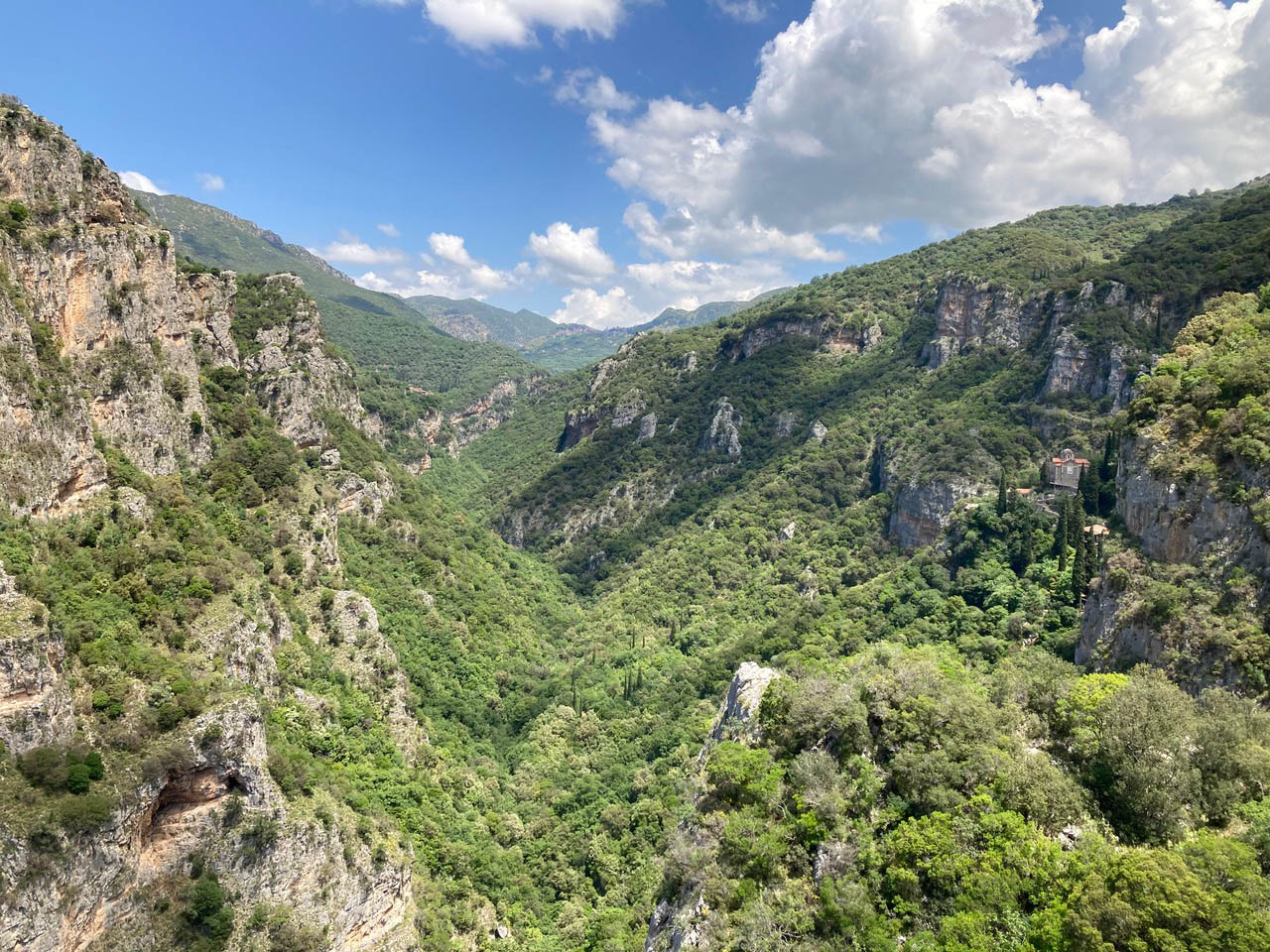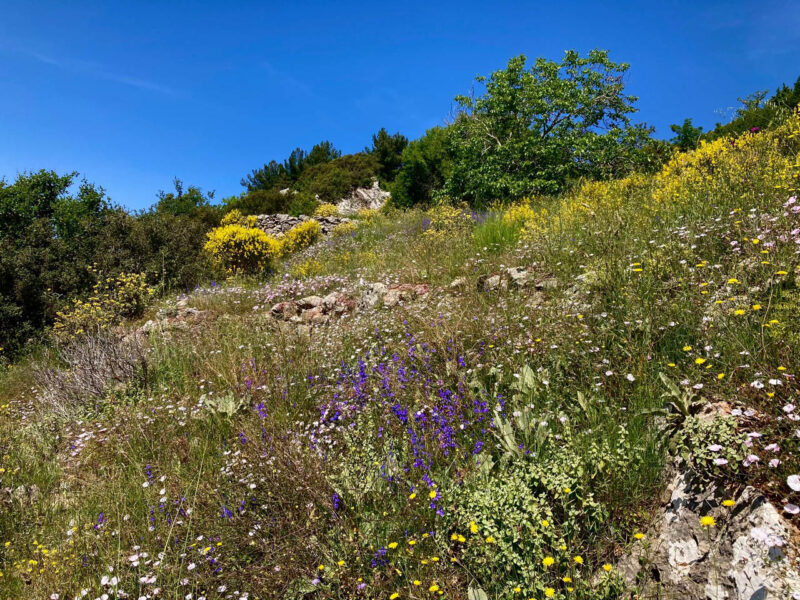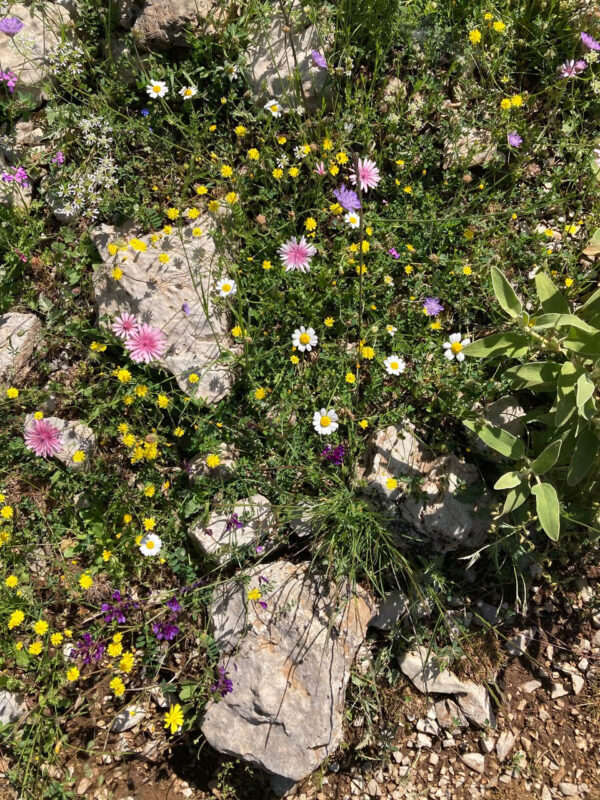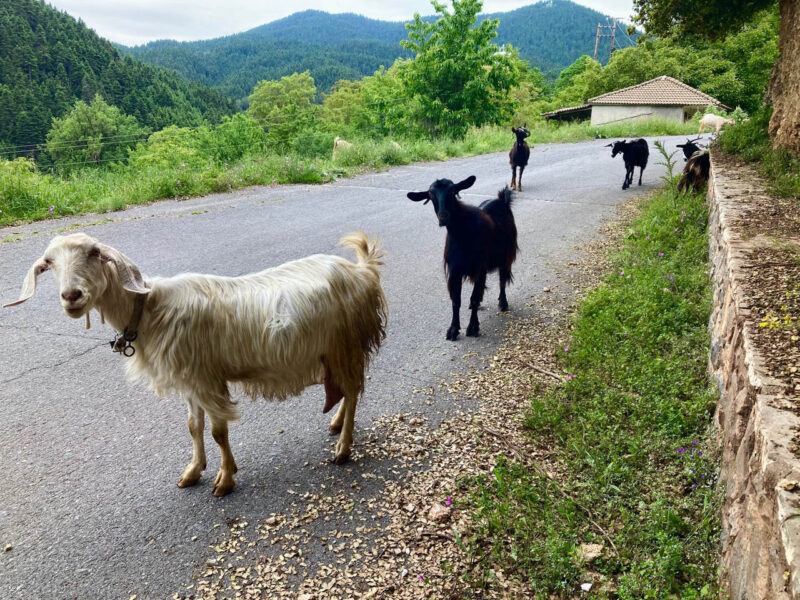Wildflowers and Pastoralism in Arcadia

Blog

Arcadia, Greece
A week of hiking the Menalon Trail in Arcadia from Lagadia to Dimitsana, high up in the Peloponnese mountains and one starts to understand what pastoralism really means. This part of Greece really is unspoiled wilderness populated with wildflowers in perfect harmony with the occasional flock of sheep or goats. All that was missing was Pan napping in the afternoon.
Hiking in the wilderness was exactly what was required after a fraught but fun Chelsea Flower Show. As luck would have it, Spring was late in Greece too and the wildflowers were still in full force allowing for a botanical extravaganza of which I had not witnessed since my student days at the Royal Botanic Gardens, Kew, gallivanting about the Cabo de Gata. The Peloponnese boasts no less than 260 endemics.
The structure of each hike required long ascents up to 1645m or descents down to mossy gorges and therefore covering many different floral communities: sub-alpine, evergreen forest, Maquis, Phrygana (garrigue), mixed deciduous forest, pseudo-steppe, and the rock walled gorges.
Wildflowers and dry planting ideas for East Anglia
Taking into consideration the way things are going in East Anglia in terms of climate change, temperature and rainfall is not too dissimilar, and I couldn’t help brainstorming how one might create an arcadian wildflower community to work in East Anglia when an appropriate garden design opportunity next arises. One would need to possibly improve drainage and the soil pH would need to coincide, but I believe it could work, and not only that, it could also be a low maintenance, wildlife friendly scheme.
Where it falls down is that it would be difficult to get seed for some of the species to not only emulate the look but create a fairly self-maintaining plant community. Take for example the stony ground herbaceous vegetation known as pseudo-steppe found on the lower hills up to about 700m: typically, it would be a base layer legume, such as Trifolium boissieri or stellatum. Amongst this would be a carpeting of Crepis rubra, Orlaya daucoides and Convolvulus elegantissima. The jewellery comes in the form of wildflowers such as umbels, pinks and bulbs such as Malabaila aurea

Yes, you can get some of these species i.e. the tassel grape hyacinth (I’ve just ordered 200) and you could get a few as seeds (ordered too), but it would be difficult. The best way would be to use more readily available equivalents – Orlaya grandiflora and Trifolium repens.
The next hurdle would be how to maintain this community. As with all these wild landscapes so popular today, editing is required to halt Mother Nature’s trajectory towards climax vegetation. In the Peloponnese, this is done by goat, sheep or fire; not an ideal scenario for a back garden in Aldeburgh (where climatically, this could work brilliantly). No, one would need someone to understand the community and edit accordingly. But that said, it could be done, resulting in a low-maintenance scheme and plenty of time to nap in the afternoon.
